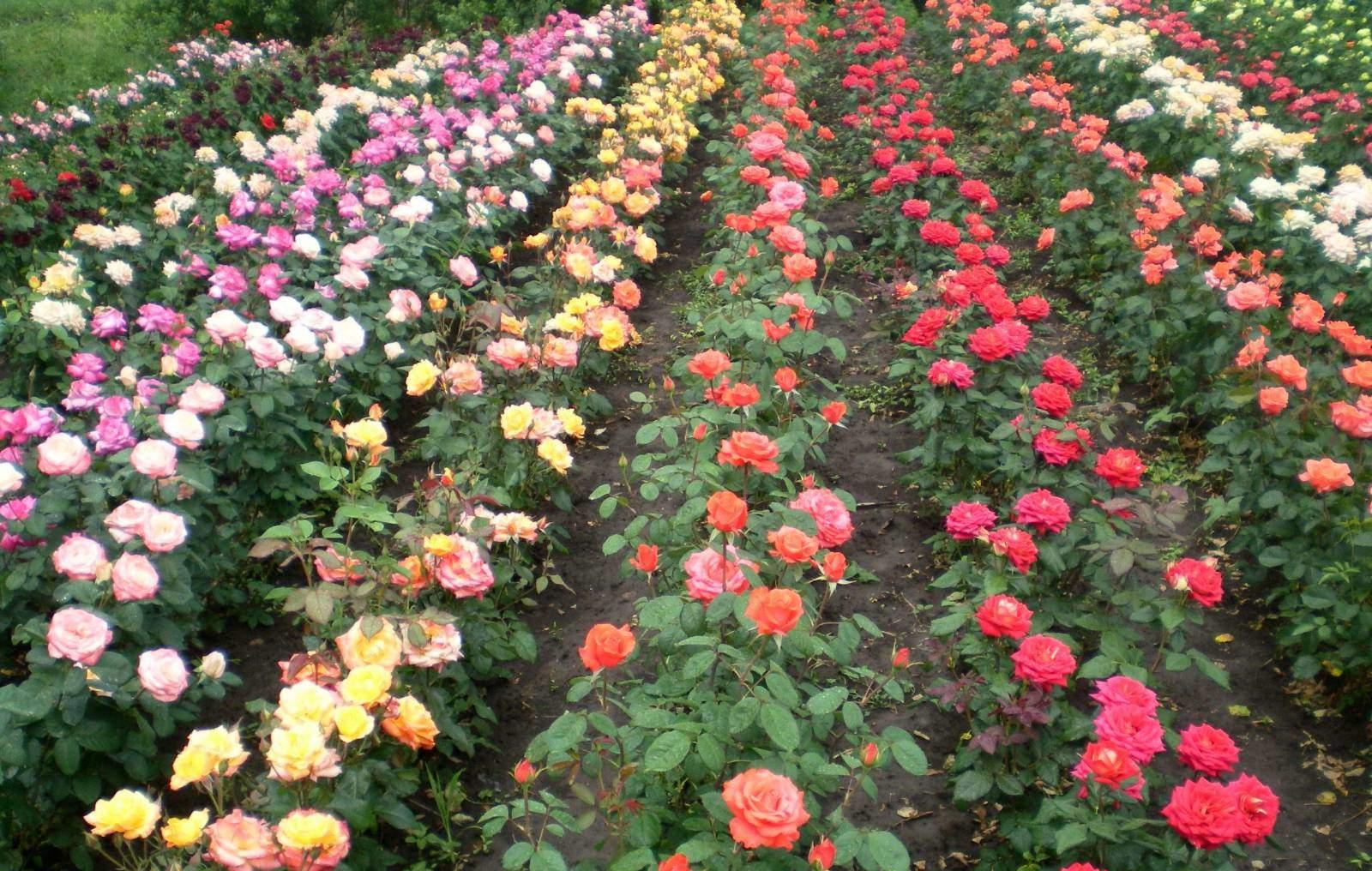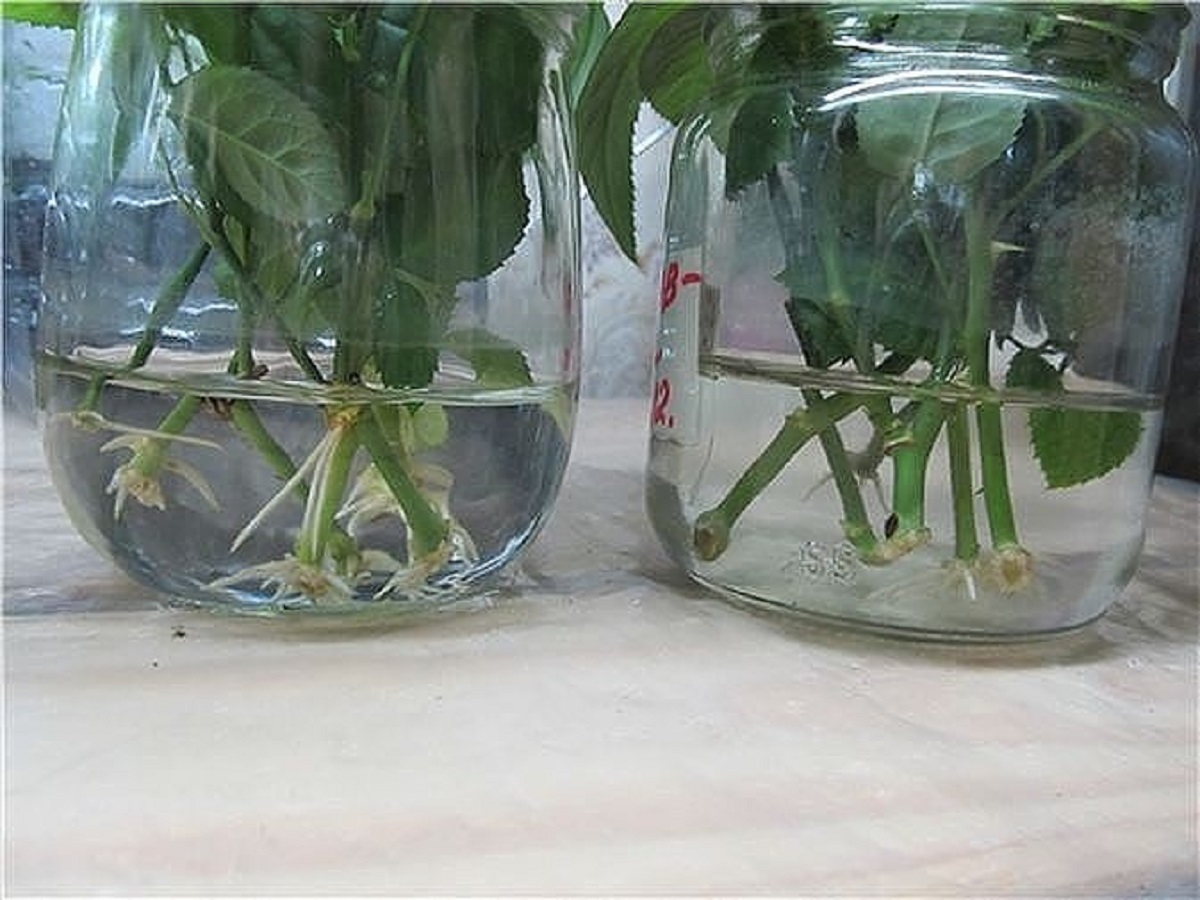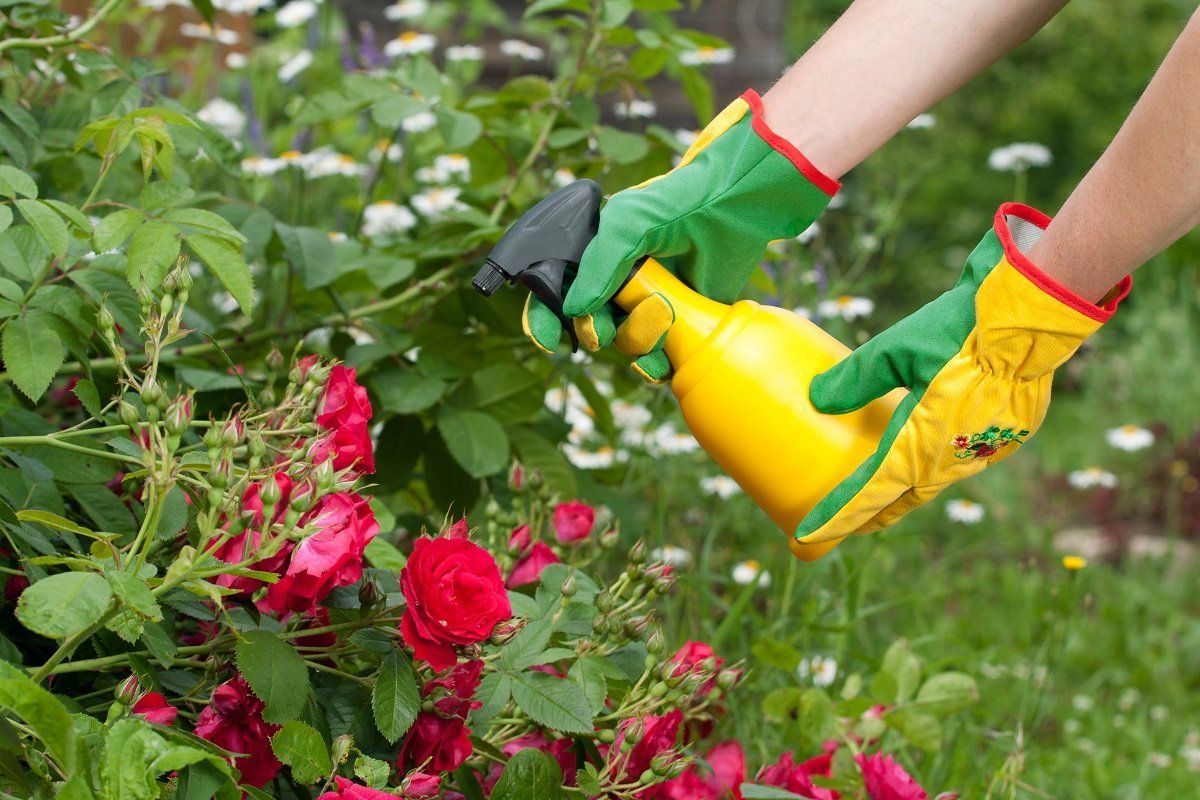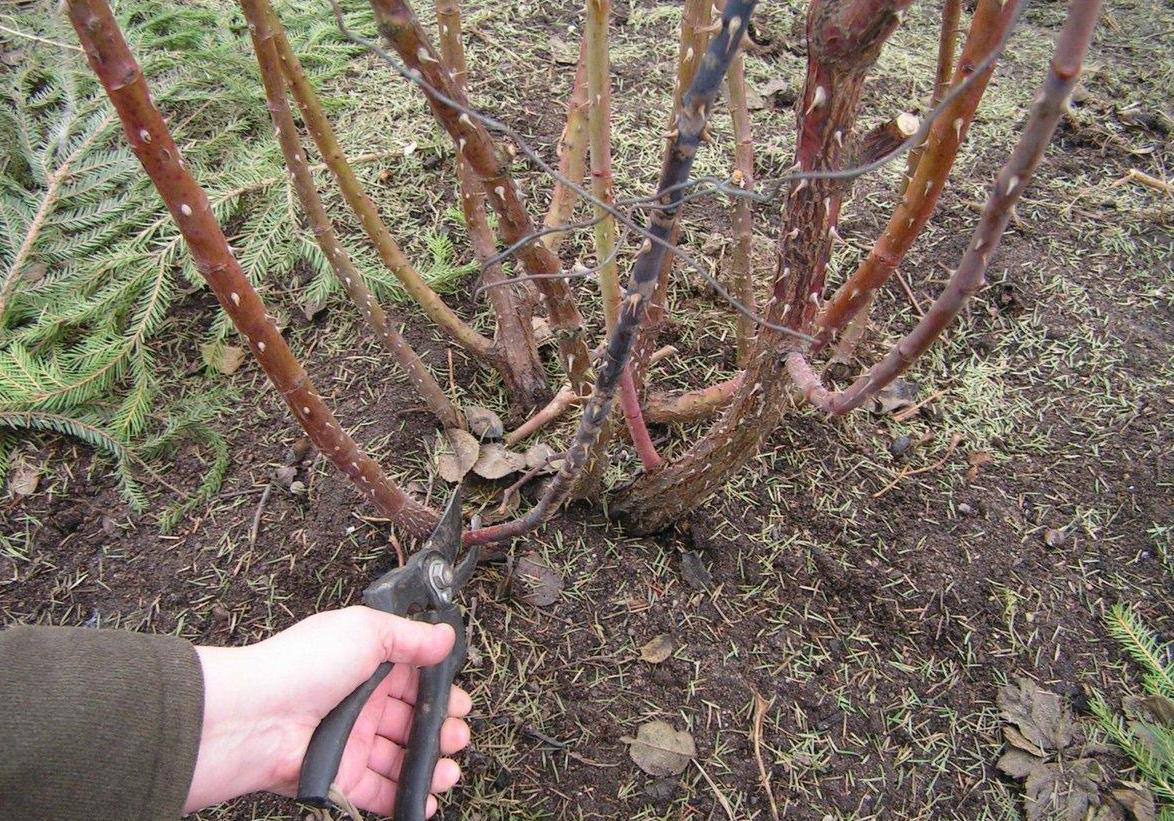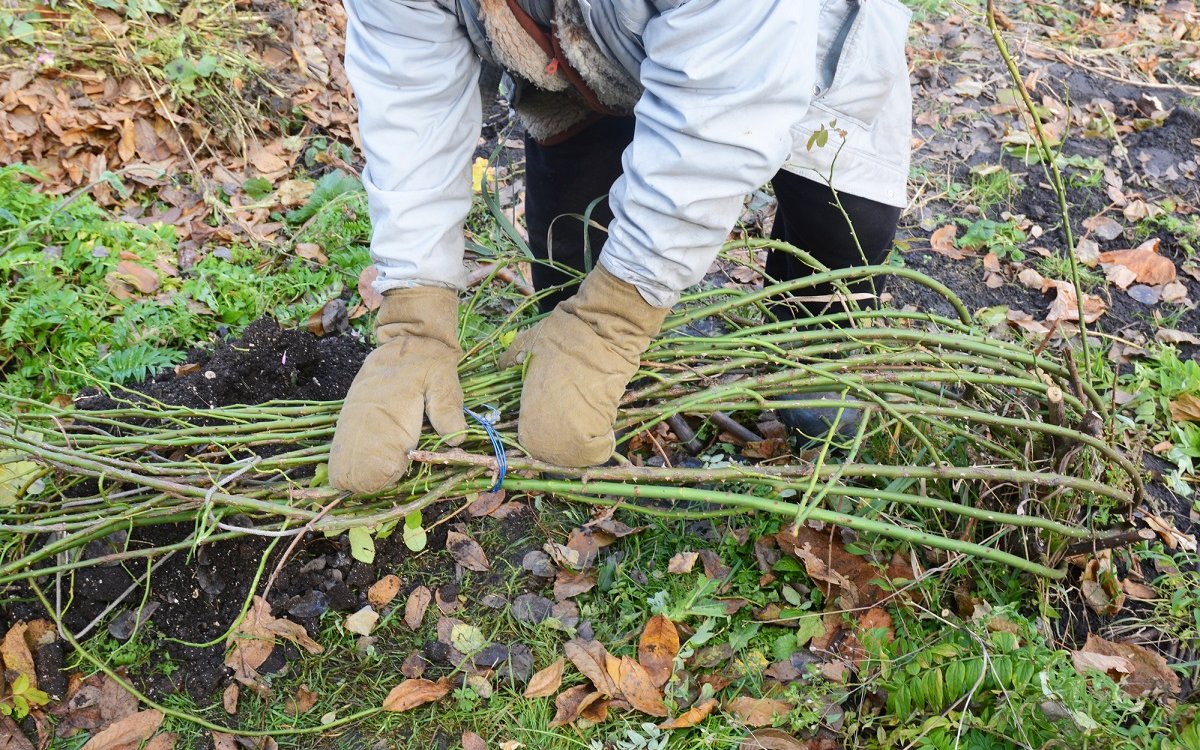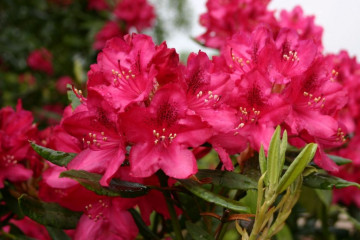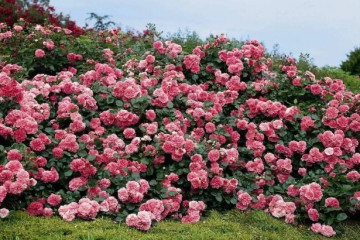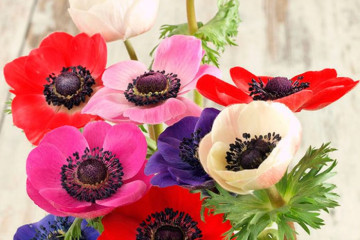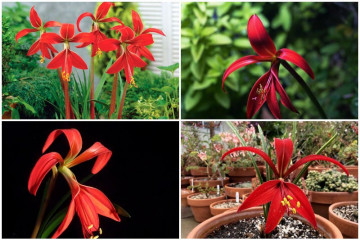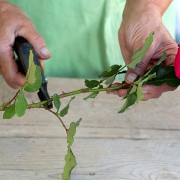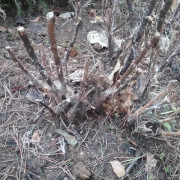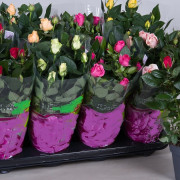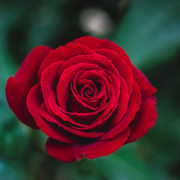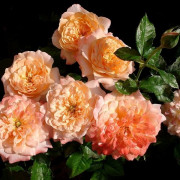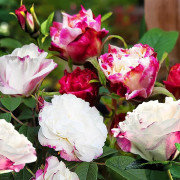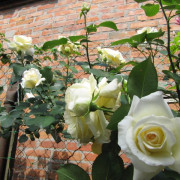Growing roses - planting and care in the open field for beginners
Content:
Rose is deservedly considered the queen of flowers. Beautiful, sophisticated and fragrant, she can decorate any flower bed. It is not surprising that many owners of private houses and summer cottages would like to know how to grow roses to revitalize their garden. The topic is rather complicated, so it should be told about it in detail, step by step dwelling on every detail.
Growing roses
To begin with, mankind has been accumulating information on how to grow roses for about twenty-five centuries. Even Herodotus, the father of history, describes Greek gardens in which, among other flowers, the most beautiful roses were grown.
Of course, since then, the cultivation of home roses has stepped forward. Experts managed to discover hundreds of techniques to improve the appearance of flowers, to bring out thousands of hybrid varieties. And all this splendor is available today to everyone who wants to grow roses in the country.
Growing tips for beginners
Before talking about roses, how to plant and care for them, you should give a simple advice - immediately decide on the desired look. After all, today's market offers a huge selection. There are both bush and climbing varieties for potted and outdoor cultivation. We must not forget about the appearance, as well as the requirements for care (some are much stronger, tolerate drought and insect attacks more easily than others) and the climate.
If you do not make mistakes at this stage, then everything will be much easier - roses, care, cultivation and other work will turn into pleasure.
How to plant roses correctly
Of course, it all starts with the landing. In this case, you can use seedlings (they can be easily obtained from cuttings) or a pink seed. The first option is preferable - it allows you to save time and get exactly the kind you wanted.
The optimal soil composition is a mixture of sand, fertile soil and humus or compost. However, if the cultivation is carried out on light soils, then sand can be abandoned. First you need to dig a square hole about 50x50 cm in size. Fill the drainage at the bottom. Crushed stone, expanded clay or even broken brick with a layer of about 10 cm will do. After that, the pit is filled with the mixture described above - it is nutritious and light, which ensures the rapid development of the root system. Immediately after planting, the plant should be watered abundantly to speed up engraftment.
It is best to plant rose seedlings in open ground in late August and early September. With proper care, the plant can easily pick up enough nutrients to survive the winter safely. Then, with the onset of warm days, the bush will quickly grow and very soon it will delight the gardener with rich greens, and after some time with gorgeous flowers.
You can refuse fertilizers in the first year after planting - the nutrient substrate will provide all the useful substances. But in subsequent years, feeding will have to be carried out several times per season. It is important to remember simple rules here:
- Nitrogen fertilizers are applied in the spring when the buds swell. Nitrogen is needed for a quick set of green mass.
- Potash fertilizers - the entire flowering period, that is, from late June to mid-August.Without potassium, there will be no buds on the bushes, and therefore no flowers.
- Phosphate fertilizer - in mid to late September to strengthen the root system before wintering.
You can use both mineral supplements and organic ones. If, when growing roses, the gardener prefers organic matter, then herbal infusion can be used as nitrogen fertilization, and potassium and phosphorus can be added to the soil by adding wood ash.
Watering
Of course, every gardener who wants to know how to grow a rose should know a lot of secret little things, including those related to watering. In the first year after planting, roses should be watered regularly - 2-4 times a week, depending on the composition of the soil (sandy water leaves faster than clay) and the weather (on hot windy days, the bushes lose more moisture). Subsequently, watering is enough once every 7-10 days, if there was no heavy rain. Weak ones do not count - they soak only the top layer of the soil, and the root system of roses is buried, so it will not be able to get enough moisture.
Watering the rose, like other garden plants, is best in the morning - until 10 o'clock. If you do this later, the drops of water falling on the leaves can cause sunburn. With morning watering, the water has time to evaporate without harming the leaves. Evening watering is possible, but only on warm summer days - it is better to refuse it in the fall. The cold night wind hits the wet leaves hard. They can turn black and fall off, like after a frost. True, this is true for outdoor cultivation. If the bushes grow in a greenhouse, then there are no such strict rules.
Correct pinching
Another very important detail, which is often forgotten by novice gardeners who decide to plant roses, is the pinch. The procedure is quite simple - you just need to remove individual shoots in order to form a crown of the desired shape. After all, every gardener likes neat bushes, and not elongated, twisted, as if underdeveloped trees.
The procedure can be carried out already from the first year, then strong shoots will go from the base of the bush. Subsequently, it should be carried out every spring, soon after the buds begin to swell. The optimal length of the shoots left is 20-25 centimeters. It is also very important to pinch the tops of strongly growing varieties in a timely manner so that the bush is thick and squat.
But here, too, you cannot let everything take its course, carrying out the pruning somehow. The branches must be carefully examined before carrying out the procedure. It is necessary to select a stem and cut it about 1-2 cm above the bud, then young shoots will go from it.
If the bush is weakened or damaged during the winter, then the shoots will most likely be frail. The buds that appear on them should be removed to allow the branches to get stronger.
How to prune bushes
Perhaps the most frustrating part of working with flower bushes for novice gardeners is pruning. But if we talk about roses, outdoor care for beginners would be incomplete without this important part.
Pruning should be done in the spring, after the plants wake up. The main goal is to thin out the bush. If there are too many branches, then it loses its decorative effect, and a large number of buds will lead to the fact that many flowers will be rather small and underdeveloped.
When working with young plants (up to 5-7 years old), light pruning will do. This is just the removal of part of the young shoots - it is advisable to leave no more than 3-5 on each trunk. And it is advisable to cut the trunks themselves - then they will not grow up, but to the sides, thickening the plant beautifully.
Old and neglected plants need more careful pruning. In this case, the bushes are generally cut to a height of 10-12 cm from the ground.You should not worry - it is enough to feed the plant well and soon it will grow back. By the way, this is a great opportunity to collect planting material if the gardener prefers the cuttings method of growing roses.
Preparing for autumn / winter
Also, talking about roses, planting and care in the open field, you cannot miss such an important part as preparing for wintering. After all, Russia is not France, where bushes can hibernate without shelter. Most varieties simply won't survive freezing days when temperatures drop to -20 degrees Celsius or even lower. Therefore, the gardener must do everything possible to ensure that his favorite hybrid and tea roses survive the winter safely.
Preparation begins already in mid-August - you need to stop making fertilizing, except for phosphorus, so as not to cause an additional wave of flowering or the build-up of excess green mass. After the first frosts, which will kill the leaves, the latter must be carefully collected - they can be burned or sent to the compost heap. If this is not done, then in the spring the leaves can begin to rot, infecting the entire plant.
Then the roses need to be covered. Various materials are suitable, ranging from sawdust, well-chopped dry grass or foliage (the main thing is that it is dry and does not contain pest larvae), ending with spunboard, lutrasil and agrotex. The most important thing is to cover the roots, as well as the lower part of the shoots, at least to a height of about 5-7 cm.
In winter, the insulation can be further reinforced. When clearing garden paths, gently fold soft, loose snow over the bushes. Then they will definitely easily endure even the coldest winter days.
In the spring, the snow will gradually melt, and the summer resident will have to remove the thermal insulation material. It is recommended to do this from late March to mid-April, depending on the climate in a particular region.
Of course, it is impossible to tell everything about roses from A to Z in one article. But a novice florist, for sure, will find a lot of useful tips that will allow him not to make mistakes and grow gorgeous rose bushes.
